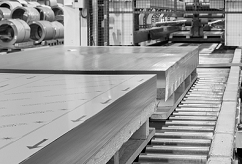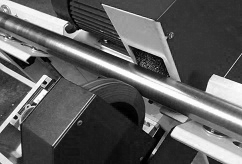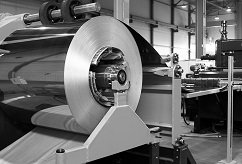18 10 steel, also known as 18-10 stainless steel, is a high nickel-chromium alloy steel whose main components are alloys of iron, chromium, nickel, and other trace elements. Among them, “18” represents a chromium content of 18%, providing good corrosion resistance;
“10” means that the nickel content is 10%, which helps to increase the toughness and corrosion resistance of the material.
Chemical composition
Stainless steel 18/10 is stainless steel containing 18% chromium (Cr) and 10% nickel (Ni).
The representative of 18/10 stainless steel is 316 stainless steel, and others include 316L stainless steel, 316H stainless steel, 316Ti stainless steel, 316Nb stainless steel, 316N stainless steel, 316LN stainless steel, etc.
Chromium (Cr): 17.0% – 19.0%
Provides excellent corrosion resistance and oxidation resistance.
Nickel (Ni): 8.0% – 10.5%
Enhanced toughness, ductility and corrosion resistance.
Carbon (C): ≤ 0.08%
Maintains weldability and corrosion resistance.
Manganese (Mn): ≤ 2.0%
Improve strength and processing performance.
Silicon (Si): ≤ 1.0%
Enhance oxidation resistance.
Phosphorus (P): ≤ 0.045%
Sulfur (S): ≤ 0.03%
Improve processing performance.
Iron (Fe): Balance
Physical properties:
Density: 7.93 g/cm³
Melting point: 1400 – 1450 °C
Coefficient of thermal expansion: 16.5 μm/m·K (20 – 100 °C)
Thermal conductivity: 16.3 W/m·K (100 °C)
Resistivity: 0.73 μΩ·m
· Density: about 7.9 g/cm³
· Carbon equivalent (C.E.): calculated according to the formula, used to evaluate the weldability and hardening tendency of the material.
Mechanical properties:
X10CrNiMoTi18-10 has different mechanical properties under different heat treatment conditions, but generally has the following characteristics:
· Tensile strength: Depending on the specific heat treatment state, it can reach 500-700 MPa.
Tensile strength: ≥ 515 MPa
Yield strength: ≥ 205 MPa
Elongation: ≥ 40%
Hardness: ≤ 95 HRB (Rockwell hardness)
Scope of use:
18 10 stainless steel can be processed by cold processing and hot processing. Through laser cutting, stamping, welding and other technologies, complex product shapes can be achieved to meet different design requirements.
Food processing: Due to its hygienic properties, it is often used in food and beverage manufacturing and processing equipment.
Medical equipment: Medical equipment and equipment require high standards of corrosion resistance, and 1810 stainless steel is very suitable.
Chemical equipment: This material is widely used in chemical reactors, pipelines and storage tanks because it can effectively resist the erosion of chemical media.
Architectural decoration: In the construction industry, X5CrNi18-10 stainless steel is used for decoration of exterior walls, handrails, etc., providing modernity and durability.









